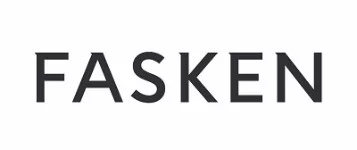- with readers working within the Advertising & Public Relations industries
- with readers working within the Advertising & Public Relations industries
- within Law Department Performance topic(s)
- with Senior Company Executives, HR and Inhouse Counsel
Effective May 15, 2025, the Canadian Securities Administrators (CSA) increased the dollar amounts that can be raised under the listed issuer financing exemption (LIFE). As we previously discussed, issuers can now raise the greater of (i) $25 million; and (ii) 20% of the aggregate market value of the issuer's listed securities, to a maximum of $50 million. In all cases, LIFE financings which closed within the previous twelve months must be taken into account, and various other rules apply.
Notably, LIFE's 50% dilution limit continues to apply. Specifically, the LIFE distribution, including securities issuable on conversion of warrants if convertible within 60 days of closing of the distribution, cannot result in an increase of more than 50% of the issuer's outstanding listed equity securities as of the date of the news release first announcing the LIFE distribution.
After LIFE was announced in late 2022,1 I explored whether its 50% dilution restriction could render LIFE illusory for smaller issuers and found that it could.2 I will now revisit the issue under LIFE's recently-increased limits. Unfortunately, my conclusion is largely the same. Here are the numbers.3
Example 1 – $500 Million Market Cap Issuer
Issuer 1 has 100 million shares outstanding, trading on the TSX at $5 per share for an aggregate market value of $500 million. 20% of the aggregate market value of Issuer 1 is $100 million.
Issuer 1 can therefore raise the maximum of $50 million allowed under LIFE, e.g., by issuing 10 million shares at $5 per share. The 10 million new shares represent only 10% of the 100 million shares outstanding immediately prior to the LIFE financing, a percentage well below LIFE's 50% dilution limit. Stated differently, as the financing for the $50 million maximum does not result in an increase of more than 50% of Issuer 1's outstanding listed equity securities immediately prior to the financing, LIFE's 50% dilution restriction does not apply to Issuer 1.
Example 2 – $25 Million Market Cap Issuer
Issuer 2 has 250 million shares outstanding, trading on the TSXV at $0.10 per share for an aggregate market value of $25 million. 20% of the aggregate market value of Issuer 2 is $5 million.
Without the 50% dilution limit, Issuer 2 could raise a maximum of $25 million under LIFE, e.g., by issuing 250 million shares at $0.10 per share. However, the 250 million new shares would represent 100% of the 250 million shares outstanding immediately prior to the financing and thus contravene LIFE's 50% dilution restriction. The 50% dilution restriction limits Issuer 2 to issuing 125 million new shares, representing 50% of Issuer 2's 250 million outstanding shares. Or, put differently, LIFE's 50% dilution restriction effectively limits Issuer 2 to raising a maximum of $12.5 million by issuing 125 million new shares at $0.10 per share.
This is far short of the $25 million permitted under LIFE absent the 50% dilution limit.
Concluding Comments
The recent amendments to LIFE are commendable. The maximum amounts have been increased and the determination of the number of issued equity securities is now as of the date of the LIFE financing, rather than as of the date that is twelve months before the date of the LIFE financing, which was problematic. Regarding the dilution limit, I wrote the following in October 2022:
"It is evident that the 50% dilution limit may impose a significant limit on the amount raised and have an adverse effect on financings by smaller issuers under LIFE, which runs contrary to the purpose of LIFE."
Unfortunately, the recent amendments to LIFE have not rectified this undue limitation for smaller issuers.4
Footnotes
1. The CSA announced the amendments to NI 45-106 Prospectus Exemptions on September 8, 2022 and the amendments became effective on November 21, 2022.
2. See Fasken, LIFE Revisited (October 20, 2022). – https:/www.fasken.com/en/knowledge/2022/10/life-revisited
3. To make it simple, in neither of the two examples has the issuer effected a LIFE financing in the last twelve months.
4. See Fasken, LIFE Revisited (October 20, 2022). – https:/www.fasken.com/en/knowledge/2022/10/life-revisited
The content of this article is intended to provide a general guide to the subject matter. Specialist advice should be sought about your specific circumstances.


